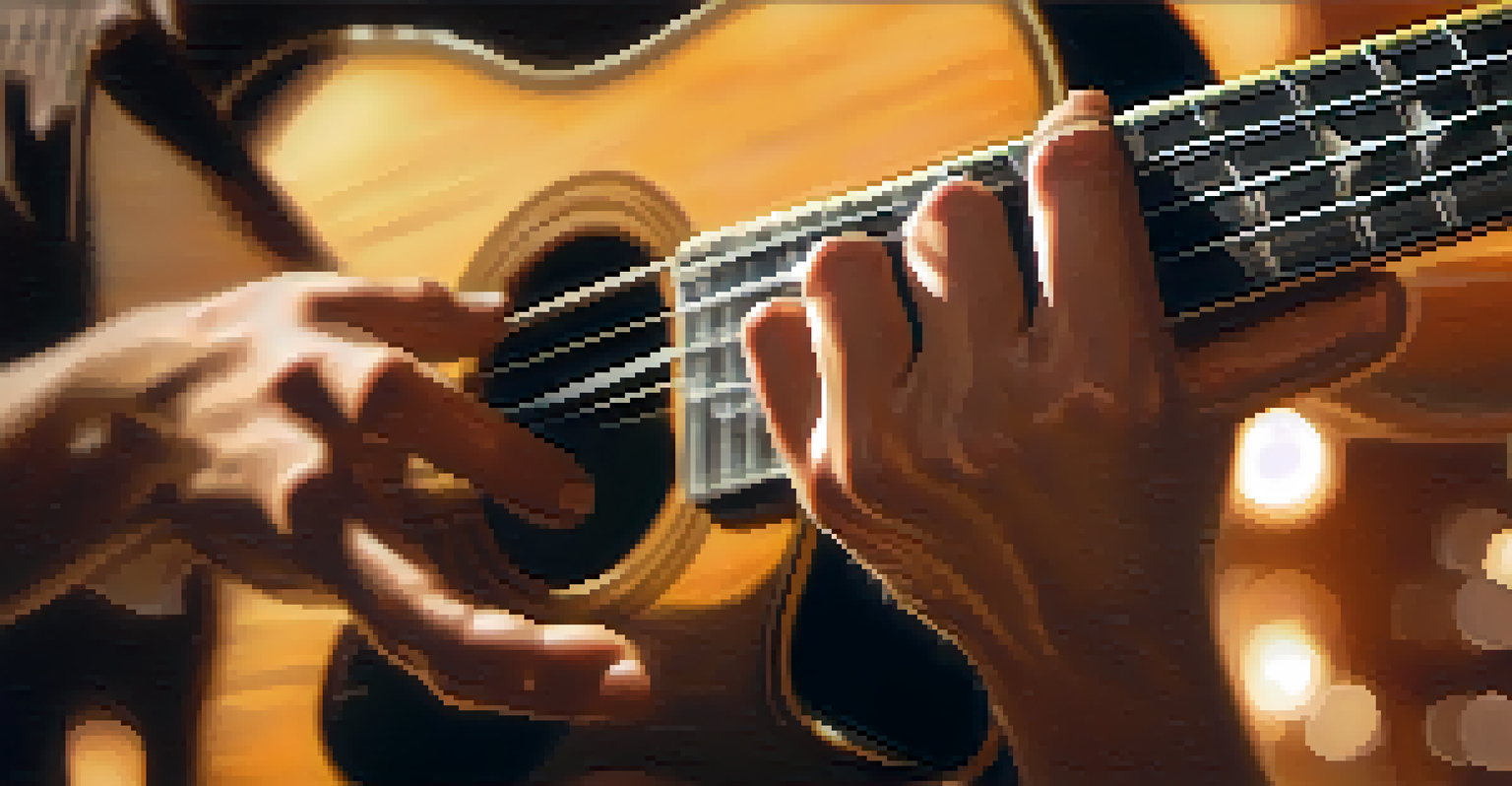Mathematics and Music: Harmonizing Numbers and Notes

The Mathematical Foundations of Music Theory
At its core, music theory relies heavily on mathematical principles. From the time signatures that dictate rhythm to the scales that create melodies, numbers play a vital role. For instance, a simple 4/4 time signature means there are four beats in each measure, making it easy to structure a song.
Mathematics is the music of reason.
Moreover, the relationships between different notes can be expressed using ratios. For example, an octave is a doubling of frequency, while a perfect fifth has a frequency ratio of 3:2. These mathematical relationships not only define harmony but also enhance our understanding of musical composition.
By diving into the mathematics of music, we uncover a deeper appreciation for both disciplines. This connection invites musicians and mathematicians alike to explore the symphony of numbers that underpins musical creation.
Rhythmic Patterns: The Beat of the Numbers
Rhythm is the heartbeat of music, and it is fundamentally rooted in mathematics. Every song has a tempo, which is measured in beats per minute (BPM). This numerical representation helps musicians understand the pace at which to play, making it easier to coordinate with others.

Patterns in rhythm can often be seen as mathematical sequences. For example, many popular music genres utilize syncopation, where the expected beat is disrupted, creating interest. These rhythmic variations can be seen as mathematical shifts that keep the listener engaged.
Math Forms the Basis of Music
Mathematical principles underpin music theory, influencing everything from rhythm to harmony and composition.
Understanding these rhythmic patterns allows musicians to create dynamic and exciting pieces. It also highlights how mathematics can bring a unique structure to the spontaneity of music, blending creativity with calculation.
The Role of Frequency and Pitch in Music
Frequency, the number of vibrations per second, is a key component of pitch in music. When you play a note on an instrument, the sound wave produced has a specific frequency, which determines how high or low the note sounds. The mathematical relationship between frequencies helps musicians create scales and chords.
Music is an outburst of the soul.
For example, the equal temperament tuning system divides the octave into 12 equal parts, allowing instruments to play in any key. This system uses logarithmic ratios, making it easier to shift between keys without sounding out of tune. It's a perfect blend of mathematics and musicality.
By understanding frequency and pitch, musicians can manipulate sound to evoke emotions and create distinct atmospheres in their compositions. This relationship showcases how numbers can translate into feelings through the medium of music.
Mathematics in Musical Composition and Arrangement
Composing music often involves mathematical thinking, especially when it comes to arranging different elements. Musicians must consider aspects such as harmony, melody, and counterpoint, which all rely on mathematical relationships. For example, a composer might use Fibonacci sequences to determine the lengths of musical phrases.
Additionally, patterns and symmetry play a significant role in composition. A composer may create a theme and then develop variations of it, exploring different intervals and rhythms while maintaining the underlying mathematical structure. This approach adds depth and complexity to the music.
Rhythm and Patterns are Numerical
Rhythmic patterns in music often mirror mathematical sequences, enhancing the creative structure and listener engagement.
Through the lens of mathematics, the art of composition becomes a fascinating puzzle. Musicians can experiment with different arrangements, leading to innovative and unique pieces that reflect both numerical precision and artistic expression.
Exploring the Fibonacci Sequence in Music
One of the most intriguing connections between mathematics and music is the Fibonacci sequence, a series of numbers where each number is the sum of the two preceding ones. This sequence often appears in nature, and it also finds its way into musical compositions. Many composers have used Fibonacci numbers to structure their works, creating a sense of balance and proportion.
For instance, the number of notes in a musical phrase might mirror Fibonacci numbers, or the timing of dynamics might reflect this sequence. These mathematical principles help to create a natural flow within the music, resonating with listeners on a subconscious level.
By exploring the Fibonacci sequence in music, we see how mathematics can guide artistic creation. It presents an opportunity for musicians to tap into universal patterns, enriching their compositions with a sense of harmony that transcends mere notes.
Mathematics and Modern Music Technology
In today's digital age, mathematics plays a pivotal role in music technology. Software used for recording, producing, and editing music often relies on complex algorithms and mathematical models. These technologies allow musicians to manipulate sound with precision, transforming their creative visions into reality.
For example, digital audio workstations (DAWs) utilize mathematical transformations to edit audio files, apply effects, and create seamless transitions between tracks. This technology has revolutionized how music is created and consumed, making it accessible to a wider audience.
Technology Merges Math with Music
Modern music technology utilizes complex algorithms, allowing musicians to manipulate sound and explore new creative possibilities.
As musicians harness these mathematical tools, they can experiment with sound in ways previously unimaginable. The marriage of mathematics and technology continues to push the boundaries of musical creativity, enabling new genres and styles to flourish.
The Emotional Connection: How Math Enhances Music
While mathematics provides the structure behind music, it also influences the emotional response of listeners. The patterns and rhythms created through mathematical principles can evoke specific feelings, making the experience of music deeply personal. This connection is what draws many people to both math and music.
For example, a piece composed with a steady rhythm and harmonious intervals might evoke feelings of calm and happiness, while dissonant chords and irregular rhythms can create tension or excitement. The interplay between these mathematical concepts and emotional expression is what makes music so powerful.

By understanding how mathematics enhances music, we can appreciate the art form on a deeper level. It reminds us that behind every note and beat lies a world of numbers that contribute to the emotions and experiences we cherish.